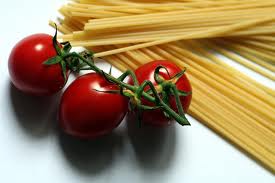Any low GI or Glycemic index diet selects and average amount of calories and combines that selection with foods that have low glycemic indexes.
These foods, when consumed, produce smaller change in blood glucose and insulin levels reducing spikes in blood sugar, appetite and your body can stay healthier and metabolize easier. Low GI foods take longer to digest and for your body to absorb. 
If you are eating lots of foods with a low glycemic index value, it helps control your appetite and delay feelings of hunger. Low GI foods also reduce your insulin levels and your insulin resistance.
Low GI foods include whole grains, vegetables like tomatoes, lettuce, red peppers, onions, and broccoli, and fruit like cherries, plums, grapefruit, peaches, apples, grapes and oranges.
Some foods with almost 0 GI (Zero on glysemic index) are:
Raspberries, Lemons, Limes
Garlic, Lettuce, Tomatoes (Any size and color), Onions (Any colour or size), Cucumber
Peppers (Red, Green, Yellow)
Broccoli, Cauliflower, Spinach, Zucchini, Green Beans
Mushrooms and Asparagus
Just because a particular food type scores 0 on the GI, does not mean that you can eat as much as you like, all food still contains calories and you have to closely monitor portion size suited to what your body requires. (Eat the same or just less than you burn)
When working out a new low GI diet or to check the GI value of any food the University of Sydney has a GI calculator that could be quite handy to use.
Advertising

All information provided for information & education purposes only. Nothing published on https://dietmy.com is intended as substitution for medical advice, diagnosis, or for any treatment.



